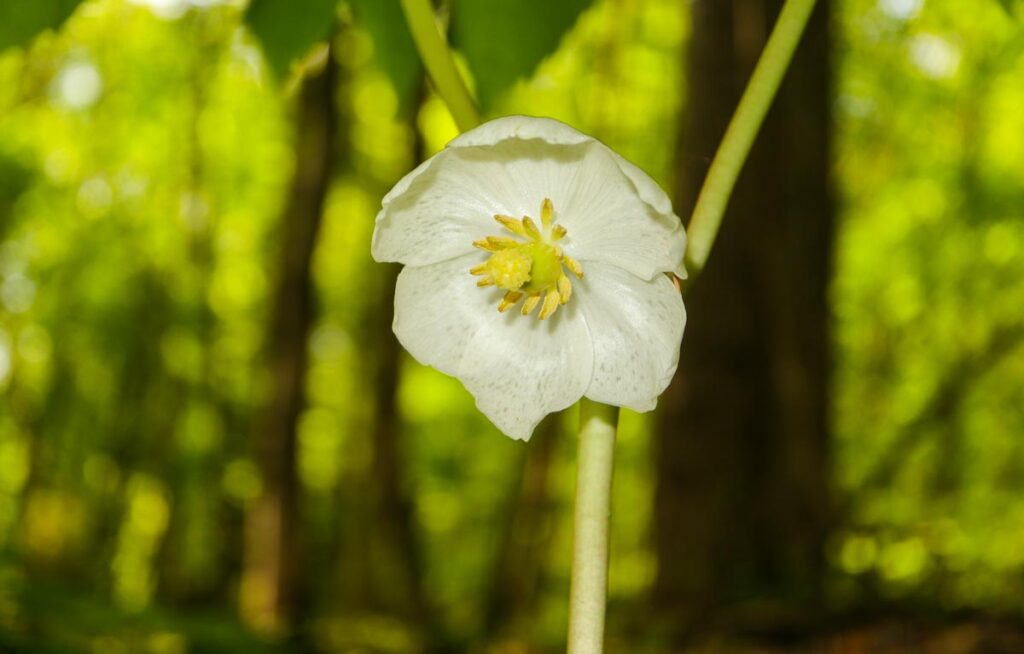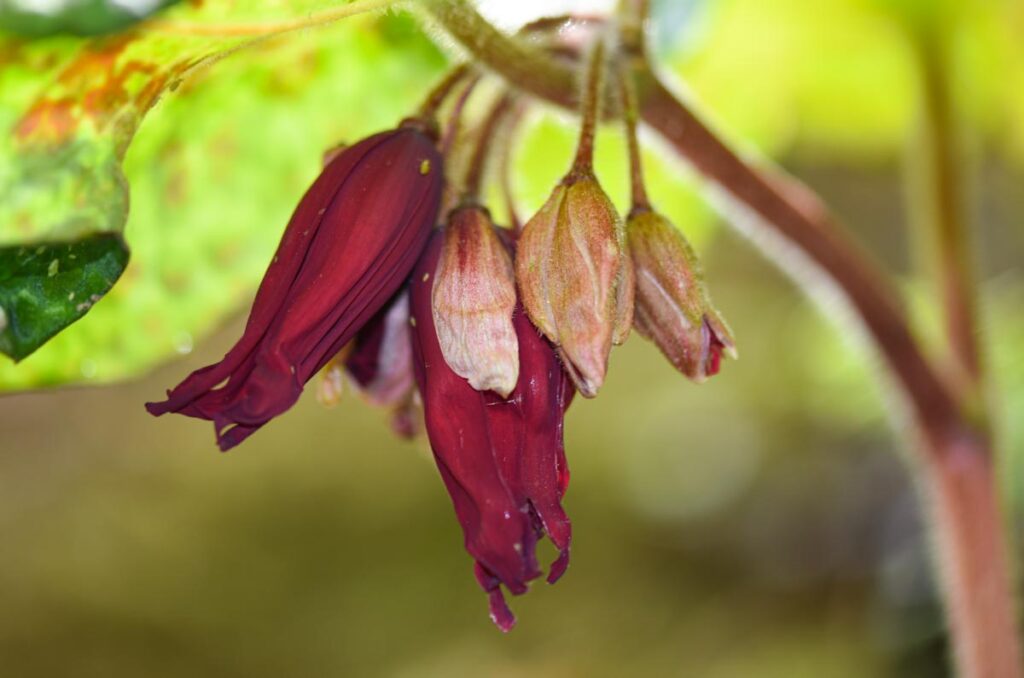Thirty years ago, when living in central North Carolina, I went on a fascinating expedition with Stephen Hall. He had recently completed his PhD at the nearby University of North Carolina in Chapel Hill. His studies focused on the movement and dietary patterns of box turtles. He described how he tracked their slow but purposeful strolls. On our hike he pointed out how mayapple fruits hang down at just the right height for a foraging tortoise.
Research shows germination of mayapple seeds is only 8% for seeds not eaten by box turtles, versus almost 40% for seeds they disperse. The seedlings are also more likely to survive since they are moved away from competing with the parent colony where it is often very shady and crowded. Mayapples are declining where populations of box turtles are reduced. There are quite a few box turtles here in my woods, and I believe it is more than coincidence there are so many mayapples. The forest is shaped by dedicated tortoises, slow and steady gardeners. Their mutualism is beneficial to both.
Our mayapples are in the genus Podophyllum, which is distributed in eastern North America and Asia, with anywhere from 6 to over 20 species depending on the taxonomist. Here in North America, there is just one species, but it makes up for that in being extremely abundant. In my forest, there are dozens of patches with anything from a few to a thousand or more individual plants in each group. Studies suggest these large colonies all originate from a single seed, spreading by rhizomes underground. They don’t flower for at least a dozen years, and the larger patches in my woods may take 100 years or more to develop. Though box turtles usually live 25 to 50 years, some live to be more than 100. The same turtles and mayapples I see today may have been living here together for over a century, both helping each other thrive.
When developing my mom’s memorial garden last year, I considered plants we enjoyed together, and others that would have significance for her in other ways. One of these is the hybrid form Podophyllum ‘Spotty Dotty’, introduced in 2005 as a hybrid of Asian species from Terra Nova nurseries. I bought my plant from Gossler Farms Nursery in Oregon. It has settled in nicely here, beginning with buds late last month and now flowering this week.
My mom’s name was Dorothy, and she was from Kansas. She endured endless jokes throughout her life about the Wizard of Oz. She ended up in New York, which she ultimately preferred even if there is no place like home. Her friends informally knew her as Dottie or Dotty. This plant is in homage to her origins. Just the Dotty part, there was no hint that she was spotted, unless you count her freckles from childhood on a Kansas farm!
As seen in this pair of photos, the local Podophyllum peltatum has single white flowers below the pure green leaves, blooming here with the backdrop of the brilliant new foliage in my forest. Podophyllum ‘Spotty Dotty’ photographed in my mom’s garden has spotted leaves, and red flowers hanging down below in clusters. I chose this cultivar since it lacks the rampant tendencies of the native mayapple, not wanting to create competition for the local plants. But I hope that in another 94 years, the length of her long and happy life, it will form a small colony, and she will live another lifetime through them. Maybe the exotic fruits will even give the local box turtles an unexpected, tasty treat.


When I look in the ancient eye of a turtle, I am amazed to think he may have hatched the day my mom was born. A hillside in my forest covered with mayapples was just a single seed finding a perfect spot as my mom was a girl playing in Kansas cornfields while also learning to play the violin that would lead her far from home. Though we measure time in very different ways, my mom shared the better part of a century with the turtles and mayapples. We are all threads in a larger tapestry, and our lives intersect in enigmatic ways to create the intricate beauty of the world.